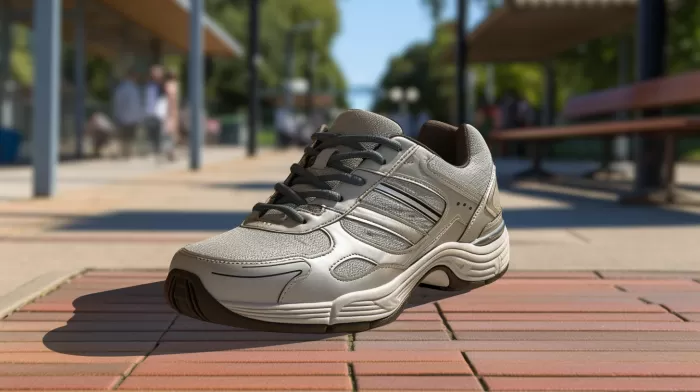Imagine growing old and still having the ability to move around, run errands, and enjoy quality time with loved ones. It’s possible, and it starts with taking one simple yet crucial step today – walking. Research at the Sargent College at Boston University indicates that walking at least 6,000 steps a day can help ward off knee osteoarthritis (OA), a leading cause of mobility issues in older adults. Don’t wait until it’s too late; incorporate daily walking into your routine and continue to live independently throughout your golden years.
The Threat of Knee Osteoarthritis
Knee osteoarthritis afflicts 27 million Americans, making it the leading cause of functional limitation amongst older adults. Approximately 80% of individuals with knee OA experience limited movement, and 11% of knee OA sufferers require ongoing assistance to move around. This condition affects not only the individual’s independence but also overall quality of life and mental well-being.
As adults age, their risk of developing knee OA increases. Coupled with the fact that many people with arthritis walk less than 90 minutes a week, the growing risk of severe disability and dependence as we grow older becomes alarmingly clear.
How 6,000 Steps Make a Difference
According to research by Daniel White and his team at the Sargent College at Boston University, walking 6,000 or more steps daily offers protection against the mobility limitations caused by knee OA. Walking is an inexpensive and accessible activity that provides significant health benefits, even at lower step counts. White recommends individuals with or at risk of knee OA to start walking at least 3,000 steps a day, gradually working towards the ultimate goal of 6,000 steps daily.
If you’re struggling to reach 6,000 steps or even imagine doubling your current step count, don’t worry. With simple adjustments to everyday routines and commitment, getting there might be easier than you think.
Tips for Incorporating More Steps into Your Day
- Make it a priority: Establishing walking as a daily priority goes a long way in ensuring its place in your routine. Treat walking as essential as brushing your teeth, eating, or sleeping.
-
Use a pedometer: Research has shown that using a pedometer or a step-tracking device can help motivate and remind people to walk more. Set daily step goals and track your progress, gradually increasing the goal as you build stamina.
-
Start small: If you’re not used to walking long distances, start with shorter walks and gradually increase your distance or duration. Breaking walks into shorter segments can make the task feel more manageable without compromising the health benefits.
-
Find a partner: Walking with friends, family members, or even a pet can make the activity more enjoyable and motivating. Plus, it’s an excellent opportunity to catch up and strengthen relationships.
-
Choose the right footwear: Comfortable and supportive shoes can make a significant difference in the quality of each step, helping prevent foot pain and injuries.
-
Walk during breaks: Instead of sitting at your desk or lounging on the sofa during break times, use those minutes to take a quick walk around the block or through a park.
-
Park farther away: Parking farther from your destination, like a store entrance or your workplace, is a simple way to squeeze in extra steps without taking much extra time.
-
Take the stairs: Whenever possible, opt for stairs over elevators or escalators. Climbing stairs helps improve cardiovascular fitness and lower body strength while increasing your step count.
-
Walk to do errands: As much as possible, walk to the grocery store, post office, or other nearby errand destinations. In addition to racking up steps, you’ll also be saving on gas and promoting a cleaner environment.
-
Make it fun: Finally, remember that walking doesn’t have to be a chore. Find ways to make it enjoyable, such as walking in scenic areas, listening to music or podcasts, or using the time to reflect and plan.
In conclusion, taking the simple yet effective measure of walking at least 6,000 steps daily can ensure you maintain your independence and freedom of movement as you age. By incorporating more steps into your routine, you can lower your risk of developing knee osteoarthritis and enjoy a better quality of life in your golden years. Now is the time to take that crucial step – and keep walking.



